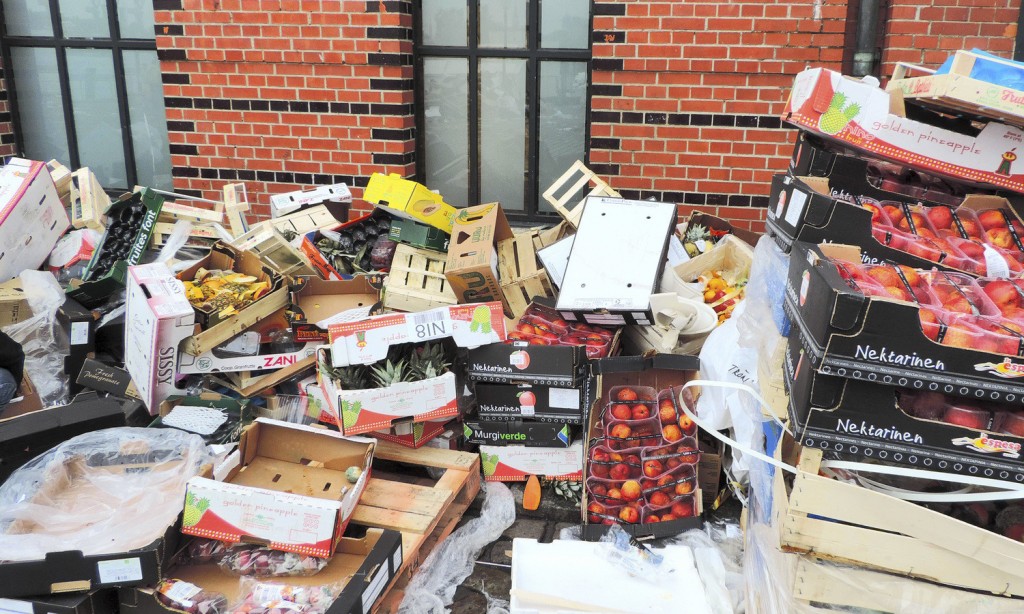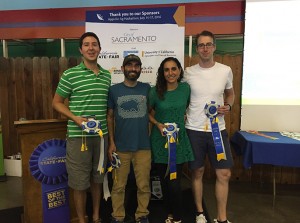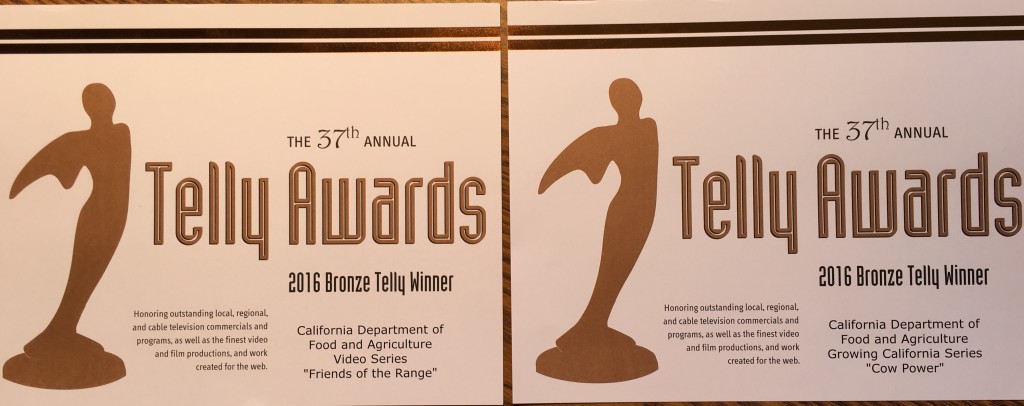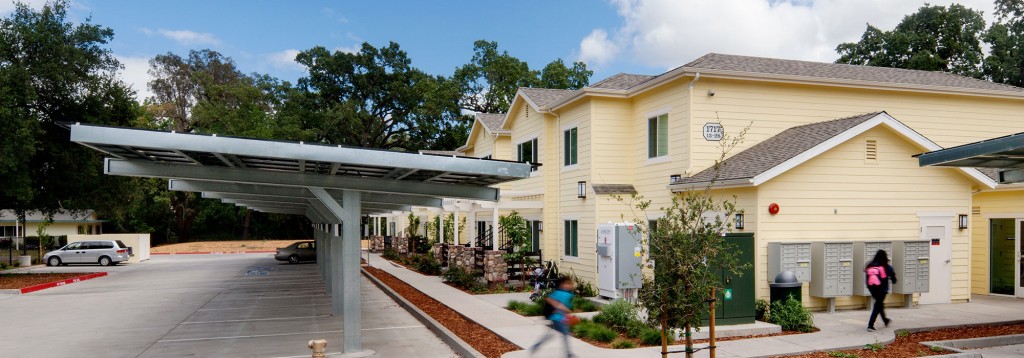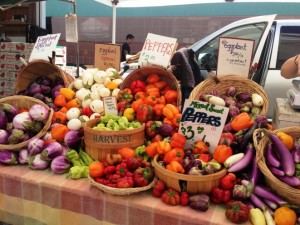It’s no secret that food loss and food waste are big problems. At least 1.3 billion tons of food is lost or wasted every year—in fields, during transport, in storage, at restaurants, and in markets in industrialized and developed countries alike. In rich countries alone, some 222 million tons of food is wasted, which is almost as much as the entire net food production of sub-Saharan Africa. And according to the U.N. Food and Agriculture Organization (FAO), wasted food costs some $680 billion in industrialized countries and $310 billion in developing countries.
While food waste presents obvious moral and economic dilemmas, it also creates environmental problems. As food decomposes in landfills it releases methane, a greenhouse gas that is 27 times more potent than carbon dioxide.
Thankfully, businesses, policymakers, farmers, researchers, and the funding and donor communities are taking action to tackle food loss and food waste. ReFED, for example, is a collaboration of businesses, nonprofits, foundations, and government leaders that came together to analyze the problem of food waste and develop practical solutions.Their report highlights 27 of the most cost-effective ways to reduce food waste based on societal economic value, business profit potential, and other non-financial impacts.
National and international agencies have also made commitments to end food waste. One of the recently released Sustainable Development Goals (SDGs) focuses on responsible consumption and production of food. It challenges all of us to halve per capita global food waste at the retail and consumer levels by 2030. In addition, the U.S. Department of Agriculture (USDA) and the U.S. Environmental Protection Agency (EPA) set the first-ever national food waste reduction goal, which aimed to reduce food waste by 50 percent by 2030.
Here are 58 food recovery organizations that are working to meet these national and international goals and reduce food waste worldwide.
- 412 Food Rescue: (Pittsburgh, Pennsylvania, United States) This food rescue group harnesses the power of technology to match food donors and beneficiaries and mobilize volunteers to make it all happen. The team collects fresh, healthy food that is un-sellable but still perfectly good, and distributes it to community organizations that serve those in need in Pittsburgh, Pennsylvania. They also offer an Ugly CSA that provides ugly but edible produce at a reduced price.
- Amp Your Good: (United States) In an effort to change the way food drives work, Amp Your Good started the crowd-feeding movement. This new kind of food drive allows groups across the U.S. to organize campaigns to raise healthy, fresh food, as opposed to only canned or non-perishable goods. Collecting donated produce prevents it from going to waste and puts it into the hands of those who need it.
- Boston Area Gleaners: (Boston, Massachusetts, United States) Boston Area Gleaners organizes groups of volunteers in Boston, Massachusetts, to rescue surplus farm crops and provide them to people in need. In 2015, they gleaned more than 360,000 pounds of produce in 66 crop types from 54 different farms.
- Boulder Food Rescue: (Boulder, Colorado, United States) Boulder Food Recuse helps businesses identify food that would otherwise have been thrown away and diverts it, via bicycle, to day shelters and food pantries. To date, they have diverted more than 1.2 million pounds of food from landfills to hungry bellies in Boulder, Colorado.
- Caritas: (Vatican City, Italy) Headquartered in Vatican City, Caritas raises awareness about the seriousness of food waste as prices of food rise and food insecurity increases. National Caritas organizations around the world redistribute quality, untouched food through their soup kitchens.
- Center for a Livable Future: (Baltimore, Maryland, United States) Through research, analysis, and consumer awareness efforts, this program out of Johns Hopkins Bloomberg School of Public Health in Baltimore, Maryland, works to reduce the quantity of wasted food in the U.S. Some of their projects include: researching nutritional content of wasted food, mapping wasted food and food recovery, quantifying seafood waste, developing better language for food labeling, analyzing crop donations and policy incentives, and more.
- City Harvest: (New York, New York, United States) City Harvest was founded in 1982 as the world’s first food rescue organization. This year, they will collect 55 million pounds of excess food from restaurants, grocers, bakeries, manufacturers, and farms and deliver it free of charge to 500 community food programs across the city of New York.
- Community Food Rescue: (Montgomery County, Maryland, United States) This coordinated food recovery network in Montgomery County, Maryland, uses technology to enhance the work of businesses, individuals, and organizations that already recover and redistribute usable food to those in need.
- Community Plates: (Norwalk, Connecticut, United States) Based in Norwalk, Connecticut, Community Plates works to end food insecurity by transferring fresh, usable food that would have otherwise been thrown away by restaurants, markets, and other sources to food-insecure families throughout the U.S.
- Copia: (San Francisco, California, United States) Using an algorithm-based smartphone app, Copia facilitates donations and deliveries of excess food in six cities across the San Francisco Bay Area in California. Those with food to donate post their information via the app, and a driver will come pick it up. Someone looking for food can post their request online and wait for a match.
- Culinary Misfits: (Berlin, Germany) Two friends—Lea Brumsack and Tanja Krakowski in Berlin, Germany—started this catering company that uses culinary misfits, or produce that doesn’t fit conventional cosmetic standards. Their dishes celebrate the natural beauty of misshapen vegetables that are typically wasted.
- DC Central Kitchen: (District of Columbia, United States) This food distribution service based in Washington, D.C., delivers free meals to homeless shelters, transitional homes, and nonprofit organizations. Their food recycling program allows them to turn leftovers and surplus food into nutritious meals for those in need. They also offer culinary training for unemployed adults and healthy school lunches to low-income students in D.C.
- EU-FUSIONS: (Europe) Food Use for Social Innovation by Optimizing Waste Prevention Strategies (FUSIONS) is a project focused on working toward a more resource-efficient Europe by significantly reducing food waste. With 21 project partners in 13 different counties, FUSIONS monitors waste production, encourages social innovation, facilitates dialogue, and develops policy guidelines. The project aims to establish a European Multi-Stakeholder Platform to generate a shared vision and strategy to prevent food loss and waste across the whole supply chain through social innovation.
- Excess NYC: (New York, New York, United States) Excess NYC investigates the large amount of food that goes to waste in urban centers like New York City. They work to divert food from landfills by transporting waste and re-purposing it to feed people or sending it to compost. They plan to work with small businesses to change their food waste disposal practices.
- ExtraFood: (San Rafael, California, United States) ExtraFood accepts donations of any type of food—prepared food, fresh produce, dairy, eggs, meat, packaged goods, and baked goods. Their volunteers pick up donated food and excess fresh food from numerous organizations in San Rafael, California, and deliver directly to the recipient in under 30 minutes. They have delivered more than 590,000 pounds of food and aim to serve the community’s most vulnerable members, including children, adults, and families.
- Feedback: (London, England) Feedback uses tangible awareness campaigns such as Feeding the 5000 to shine light on the global food waste scandal. Feeding the 5000 is a free feast that feeds 5,000 people using food that would have been wasted. Based in London, England, they are working to build a global movement against food waste.
- Food Cowboy: (Bethesda, Maryland, United States) Food Cowboy uses mobile technology to prevent surplus food from wholesalers and restaurants from ending up in landfills. They also run the No Waste Promise Campaign, which allows growers, wholesalers, food retailers, and others to let their customers know that they are striving to ship food sustainably and recover and divert unsaleables responsibly.
- Food Cycle: (London, England) Relying on the help of volunteers, Food Cycle uses surplus food to prepare nutritious meals for those at risk of food poverty and social isolation. They are headquartered in London, England, but they serve nearly 30 communities across the U.K.
- Food Forward: (Los Angeles and Ventura, California, United States) Powered by volunteers, Food Forward rescues excess fruits and vegetables from private properties, public spaces, and farmers and wholesale markets in Los Angeles and Ventura, California. They deliver the produce to agencies that serve those in need. They have programs designed to get other citizens involved, such as private picks, where groups can get together and harvest surplus produce, and a youth service projects program that allows interested young people to complete service projects with the help of Food Forward. In total, the organization has rescued nearly 20 million pounds of produce.
- FoodLoop: (Cologne, Germany) This network technology from Cologne, Germany, allows food retail stores to quickly sell food products with a short remaining shelf-life by adjusting prices and targeting consumers through the FoodLoop mobile app. Customers who download the app will receive special offers and discounts based on their interests and purchase history.
- Food Policy Action: (Washington D.C, United States) Food Policy Action, with the help of co-founder Tom Colicchio, is tackling the policy issues that surround food waste in the U.S. Their goal is to change the national dialogue on food policy by increasing transparency and educating the public on how elected officials are voting on food-related policy issues.
- Food Recovery Network: (College Park, Maryland, United States) This student-led movement to end food waste and hunger has more than 192 chapters and has recovered more than 1,300,000 pounds of food since 2011. It was founded at the University of Maryland in College Park, Maryland, and has since spread to 42 states.
- Food Recovery Project: (Fayetteville, Arkansas, United States) An initiative of the Agricultural & Food Law Program at the University of Arkansas School of Law in Fayetteville, Arkansas, this project aims to raise awareness about the problems of food waste and hunger. They provide resources and legal information to encourage and support businesses to develop and implement food recovery programs.
- Food Rescue: (Carmel, Indiana, United States) Food Rescue has connected more than 200 agencies with more than 200 restaurants and 350 schools, resulting in an estimated millions of meals rescued annually. They focus on connecting different organizations through advocacy and education, and they provide the initial logistics to build relationships and facilitate solutions among the participating companies.
- FoodSave London: (London, England) FoodSave helps food businesses in London, England, reduce their food waste, put surplus food to good use, and dispose of unavoidable food waste more responsibly. The organization starts by conducting a food waste audits for a business, then analyzes where food gets wasted and makes recommendations to reduce that waste.
- Food Share: (Bloomfield, Connecticut, United States) Food Share is a member of Feeding America’s Food Bank Network and works to fight food waste and enable self-sufficiency for the hungry and food-insecure. Last year, they helped to distribute 11.5 million meals by collecting food donations from the food industry and distributing them to food pantries, community kitchens, homeless shelters, and other partner programs.
- Food Shift: (Oakland, California, United States) Food Shift works collaboratively with communities, businesses, and governments to develop sustainable solutions that reduce wasted food and hunger. In their newly launched program, the Alameda Kitchen, Food Shift transforms surplus, otherwise wasted foods into nutritious products for the community, while providing employment and training for individuals overcoming homelessness.
- Food Surplus Entrepreneurs Network: (Europe) This network connects European food surplus entrepreneurs online and at collaborative events hosted in hub cities across the continent. Their social innovators work together to find new solutions to decrease food waste.
- Food Waste Reduction Alliance: (District of Columbia, United States) The Food Waste Reduction Alliance’s (FWRA) work is focused on U.S. operations including manufacturing, retail, and food service. The FWRA’s objectives are to reduce our environmental footprint by decreasing the amount of food waste being sent to landfills and donating that food to help those suffering from hunger.
- Forgotten Harvest: (Detroit, Michigan, United States) Forgotten Harvest collects surplus prepared and perishable food from 800 sources, including grocery stores, fruit and vegetable markets, restaurants, caterers, dairies, farmers, and wholesale food distributors. They then distribute it to 280 emergency food providers in the Detroit area.
- Hands for Hunger: (Nassau, Bahamas) This organization is working to improve food security in the Bahamas while simultaneously reducing food waste. They do this through food rescue and donation, providing non-perishable food storage, and educating students about hunger and food waste.
- Harvard Food Law and Policy Clinic (FLPC): (Cambridge, Massachusetts, United States) Established in 2010, the FLPC gives Harvard Law School students opportunities to work with organizations on food law and policy issues, such as food waste. They produced a short film, EXPIRED, on how food date labels are misleading and contribute to waste in the United States. Recently, FLPC hosted a two-day food waste conference that attracted leaders to discuss models of food recovery and the cost savings of mitigating food waste.
- Hungry Harvest: (Maryland, United States) This organization delivers boxes of rescued “ugly” produce that is still edible but can’t be sold in retail locations. The boxes are delivered straight to homes in Maryland, D.C., and Northern Virginia. For every purchase, Hungry Harvest donates one to two pounds of produce through one of their donation partners.
- Imperfect Produce: (Emeryville, California, United States) Imperfect Produce believes that fruits and vegetables shouldn’t be rejected just because they’re cosmetically-challenged. They source imperfect produce from farms and deliver it to directly customers in the Bay Area at a reduced price. They also offer community drop-off points and a bulk ordering program.
- Iskashitaa Refugee Network: (Tucson, Arizona, United States) This grassroots organization prevents food waste through the harvesting program, where refugees and other volunteers learn how to identify, access, harvest, use, and store locally grown produce, mostly from edible trees. This program also empowers refugees by creating opportunities for them to apply their knowledge and skills from their home countries.
- Island Grown Gleaning: (Vineyard Haven, Massachusetts, United States) Every week, a group of volunteers meets at one of the participating farms on Martha’s Vineyard in Massachusetts and helps to pick and pack up surplus from that week’s crop. In 2014, they rescued 24,000 pounds of produce and delivered it to more than 20 organizations.
- L.A. Kitchen: (Los Angeles, California, United States) L.A. Kitchen reclaims healthy, local food that would otherwise be wasted and trains unemployed men and women to create delicious meals for the community. They work directly with local farmers and companies to collect fruits and vegetables that, due to cosmetic issues, would not be sold to consumers. L.A. Kitchen anticipates reclaiming 1 million pounds of food this year.
- Last Minute Market: (Bologna, Italy) Retailers, shops, and producers are linked with people and charities who need food through Last Minute Market. Food sellers who have surplus product donate their food to the market to be given to those in need. This project is active in more than 40 Italian towns, and two new projects are under development in Argentina and Brazil.
- Lean Path: (Portland, Oregon, United States) – Andrew Shakman, Bill Leppo, and Stephen Rogers created an automated industry standard software that assists in food waste tracking for food service organizations while turning a profit for the business.
- Love Food Hate Waste: (Banbury, England) As their slogan, “saving you money, saving your food,” indicates, this organization aims to raise awareness about food waste in individuals’ homes. They provide educational materials that outline practical waste prevention strategies such as portion and planning and storage tips for food.
- Lovin’ Spoonfuls: (Boston, Massachusetts, United States) This food recovery operation picks up fresh food that would otherwise be discarded from more than 50 grocery stores, produce wholesalers, farms, and farmers markets. They redistribute it the same day to more than 50 community nonprofits that feed the hungry in the Boston area. Each week, they collect more than 25,000 pounds of food and feed more than 10,000 people.
- Markets Institute, WWF: (Washington, D.C., United States) Jason Clay, Senior Vice President of Markets and Food and Executive Director of the Markets Institute at WWF, is convening key stakeholders across hospitality, retail, and food service sectors to understand how to accelerate the adoption of strategies to measure and reduce food waste. They are also promoting data transparency, which will allow companies to benchmark food waste prevention performance with their peers and across industries.
- Natural Resources Defense Council (NRDC): (New York City, New York, United States) Since 1970, NRDC has been protecting people’s right to clean air, clean water, and healthy communities. Scientist Dana Gunders has been leading their work on food with the widely distributed publications of reports such as “Wasted: How America Is Losing Up to 40 Percent of Its Food from Farm to Fork to Landfill” and “The Dating Game.” They recently partnered with the Ad Council to change consumer practices in order to reduce food waste.
- OzHarvest: (Sydney, Australia) The first perishable food rescue organization in Australia, OzHarvest collects quality excess food from more than 2,000 commercial outlets and delivers it to more than 800 charities.
- Produce to the People: (Tasmania, Australia) Produce to the People is a community-based food waste and food security project. From two acres on the grounds of Burnie High School, this four-season farm grows, gathers, and gives produce to the most vulnerable members of the community.
- ReFED: (United States) ReFED is a collaboration of businesses, nonprofits, foundations, and government leaders that came together to analyze the problem of food waste and develop practical solutions. Their report highlighted 27 of the most cost-effective ways to reduce food waste based on societal economic value, business profit potential, and other non-financial impacts.
- REFRESH: (Wageningen, Netherlands) Resource Efficient Food and dRink for Entire Supply cHain (REFRESH) is a European research project taking action against food waste. Led by Wageningen University in Wageningen, Netherlands, the REFRESH consortium brings together 26 partners from 12 European countries and China to work towards the project’s goal to contribute to cutting food waste in half. This goal involves halving per capita food waste at the retail and consumer level, reducing food losses along production and supply chains, reducing waste management costs, and maximizing the value from unavoidable food waste and packaging materials.
- Salvation Farms: (Morrisville, Vermont, United States) – This nonprofit is strengthening Vermont’s food system through agricultural surplus management. They facilitate partnerships across sectors to find efficient uses for a farm’s surplus food. They work with partner organizations to build a network to redistribute farm surplus across the state to help farmers while improving food access for low-income populations.
- Satisfeito: (São Paulo, Brazil) Satisfeito is a global movement that prevents food waste and combats child hunger by providing restaurants and their customers the chance to help nonprofit organizations around the world. At the restaurants that take part in the Satisfeito Program, there is a specific icon next to some of the plates. This icon means that this plate can also be ordered in the Satisfeito version, which is the same plate, but one-third smaller. The restaurant’s savings from serving the smaller portion will be transferred to organizations that fight child hunger.
- Save Food Asia-Pacific: (Asia) The Save Food Asia-Pacific Campaign addresses critical waste issues across Asia and the Pacific region, such as post-harvest losses. Post-harvest losses account for a majority of the food loss sustained in developing countries in this region. This educational outlet provides resources to combat this waste issue and works to promote sustainable consumption.
- Save Food from the Fridge: (Torino, Italy) – Jihyun Ryou, a Korean designer and expert on food preservation, launched this project to educate people on how to prevent waste in homes. She outlines techniques for keeping foods fresher longer through preservation techniques.
- Second Bite: (Melbourne, Australia) SecondBite exists to provide access to fresh, nutritious food for people in need across Australia. They redistribute surplus fresh food to community food programs around the country. Farmers, wholesalers, markets, supermarkets, and caterers donate food and have provided more than 40.7 million meals. They also seek to build community capacity in food skills and nutrition and advocate for an end to food insecurity.
- Society of Saint Andrew: (Big Island, Virginia, United States) This Christian hunger ministry salvages fresh produce and delivers it to soup kitchens and food banks across the U.S. One of their projects, The Gleaning Network, coordinates volunteers, growers, and distribution agencies to salvage food for the needy. The Potato & Produce Project redirects these 43,000-pound loads of fresh, nutritious produce to food banks, soup kitchens, food pantries, low-income housing areas, local churches, and other hunger agencies for distribution to those in need.Harvest of Hope educates participants concerning the domestic and global hunger problem, and encourages them to make lifelong commitments to being part of the solution.
- Stop Wasting Food: (Copenhagen, Denmark) Selina Juul is the founder of the Stop Wasting Food movement in Denmark (Stop Spild Af Mad). This is considered Denmark’s largest nonprofit consumer movement against food waste. Stop Wasting Food is set up by consumers for consumers. It seeks to raise public awareness by organizing campaigns, mobilizing the press and media, encouraging discussion and debate, and organizing events, all with the aim of decreasing the current mountains of food waste.
- The Garden of Eating (Niagara Falls, Canada) With the help of volunteers, this organization picks the fruit off of neglected fruit trees that would otherwise go to waste and donates it to food pantries. Since 2009, they have been able to donate more than 13,700 pounds of fresh fruit and vegetables.
- Think.Eat.Save: (Geneva, Switzerland) The Think.Eat.Save Campaign of the Save Food Initiative is a partnership between the United Nations Environment Programme (UNEP), FAO, and Messe Düsseldorf in support of the UN Secretary-General’s Zero Hunger Challenge. The campaign seeks to galvanize widespread global, regional, and national action and catalyze more sectors of society to be aware and act. The Think.Eat.Save website acts as a portal to showcase these ideas to provide a one-stop shop for news and resources.
- World Resources Institute (WRI): (Washington, D.C., United States) WRI is a global research organization working closely with leaders to analyze and promote strategies to increase food production in a sustainable manner and to reduce the impact that food production has on the environment. They developed the Food Loss & Waste Protocol (FLW Protocol), a multi-stakeholder effort to develop the global accounting and reporting standard for quantifying food loss and waste.
- World Vegetable Center: (Tainan City, Taiwan) The World Vegetable Center conducts research, builds networks, and carries out training and promotion activities to raise awareness of the role of vegetables for improved health and global poverty alleviation. Improving consumption, composting, and waste reduction are some of their current projects. The Center’s research and development work focuses on breeding improved vegetable lines, developing and promoting safe production practices, reducing postharvest losses, and improving the nutritional value of vegetables.
- Zero Percent: (Chicago, Illinois, United States) Zero Percent is a team of self-proclaimed “food recovery nerds” who have a passion for food and believe it shouldn’t be wasted. Zero Percent believes that hunger is a distribution problem, not a supply problem. Their website and app work to link neighborhood charities with restaurants and stores who have good surplus food in order to feed the community.



